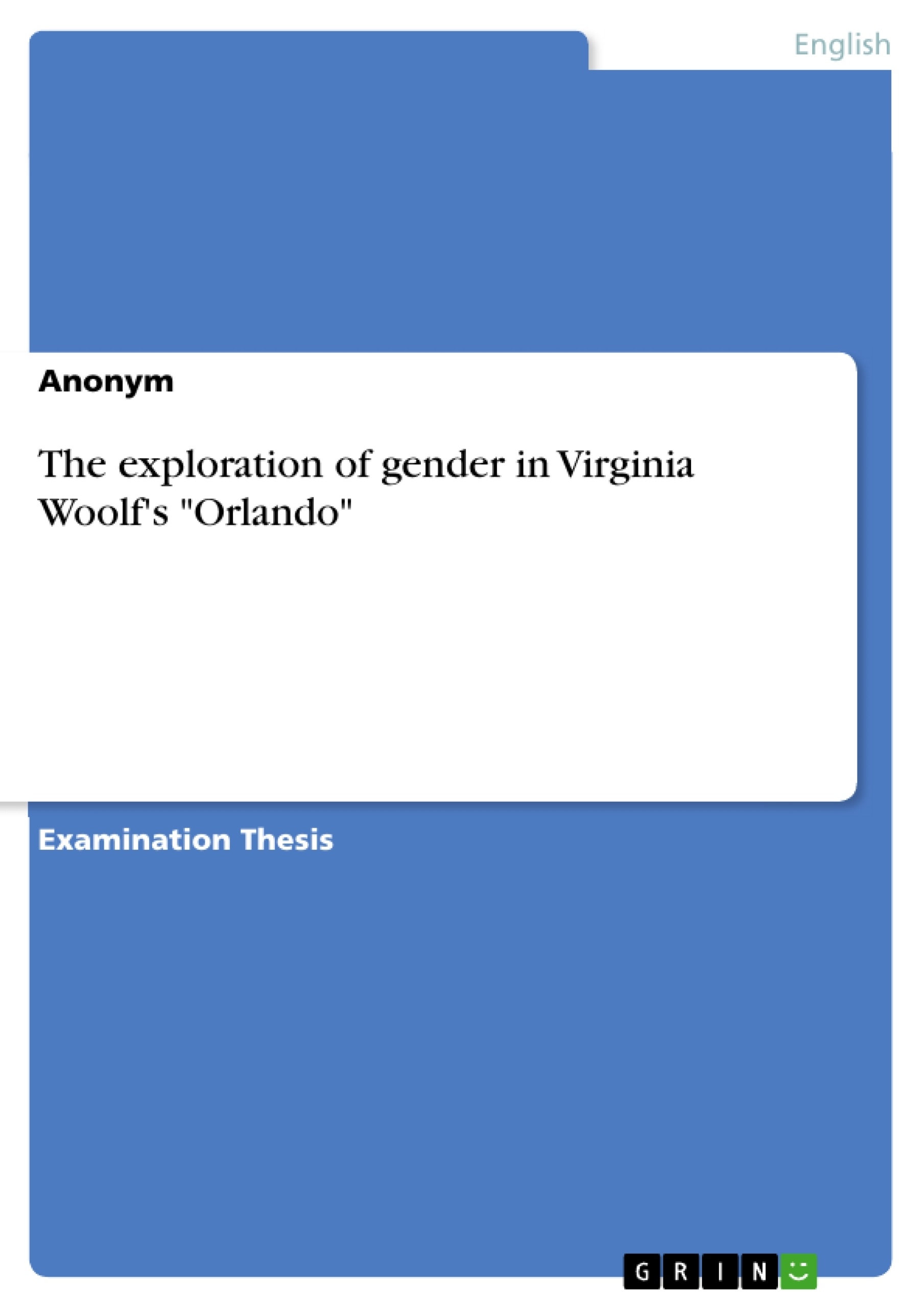This paper deals with the representation of gender in Virginia Woolf's work "Orlando: A Biography", which was published in 1928. With this novel, Woolf created a cross-genre play that does not follow ossified rules and shows a flexible gender system. Originally, the novel, which was written in the style of a biography, was intended as a parody of Vita Sackville-West's life, with whom Woolf had a long-standing affair, which will be revealed in this elaboration through Woolf's diary entries.
In the course of writing, however, the playful ideas developed into a serious critique of society's image, which is why this work is often considered a milestone for the second wave of feminism, as the androgynous main character Orlando changes her gender about halfway through the novel and becomes a woman from a man, which is why the topic of gender understanding is in the foreground. For this purpose, the concepts of gender and feminism are first introduced with the help of Judith Butler's "The Discomfort of Gender", before the focus is put on Virginia Woolf and her contribution to the feminist movement. For this purpose, Woolf's work "A Room to Herself" will be examined and her statements regarding androgyny and gender roles will be analyzed. Then, "Orlando" is presented as a stand-alone work and the concepts of the biographer, who is the narrator of the novel, and of time are emphasized, as they are fundamental to the overall understanding of the work.
In the analysis, different thematic areas are analyzed for their representation of gender. These include the change of identity as well as the social circumstances in which Orlando lives, the search for truth, love, the recurring symbol of the oak tree, which is associated with poetry, and Orlando's appearance, which Woolf punctuated with inserted images of the main character. In these chapters, Woolf casually presents how the understanding of gender evolves over time and how it is perceived by society. It is noticeable that Orlando himself always maintains his identity and his attempts to conform to societal expectations regarding gender roles fail. This makes it clear that gender is not a fixed category, but dynamic.
Inhaltsverzeichnis (Table of Contents)
- Introduction.
- The Concept of Gender and Feminism.
- Virginia Woolf
- Virginia Woolf as a Feminist.
- Orlando: A Biography.
- Summary
- Background Information
- The Role of the Biographer
- The Concept of Time
- Representations of Gender in Orlando.
- Identity and Society.
- The Truth.
- Love.
- The Russian Princess
- First Crisis
- Archduchess Harriet / Archduke Harry
- Second Crisis
- Marmaduke Bonthrop Shelmerdine
- The Oak Tree.
- The Gypsy Community.
- Looks.
Zielsetzung und Themenschwerpunkte (Objectives and Key Themes)
This paper aims to analyze the portrayal of gender in Virginia Woolf's novel Orlando, published in 1928. The work examines how Woolf challenges traditional gender roles and explores the complexities of identity through the character's transformation from man to woman.
- Gender and Androgyny
- Feminist Critique of Society
- The Role of Time and Identity
- The Concept of the Biographer as Narrator
- Symbolic Representations of Gender
Zusammenfassung der Kapitel (Chapter Summaries)
- Introduction: The introduction presents Virginia Woolf as a prominent feminist writer and explores the significance of Orlando's gender transformation in the context of 20th-century literature.
- The Concept of Gender and Feminism: This chapter introduces Judith Butler's theory on the performativity of gender and its relevance to understanding Woolf's approach.
- Virginia Woolf as a Feminist: This chapter examines Woolf's feminist activism and her contributions to the movement, particularly through her work A Room of One's Own.
- Orlando: A Biography: This chapter provides an overview of the novel, including its background, the role of the biographer, and the concept of time within the narrative.
- Representations of Gender in Orlando: This chapter delves into the various themes related to gender in the novel, examining how Orlando's identity and social circumstances, their experiences with love, and their interactions with symbolic elements such as the oak tree contribute to the exploration of gender.
Schlüsselwörter (Keywords)
Key terms and topics explored in the text include gender, androgyny, feminism, Judith Butler, Virginia Woolf, Orlando: A Biography, identity, society, love, the biographer, time, and symbolic representation.
- Quote paper
- Anonym (Author), 2021, The exploration of gender in Virginia Woolf's "Orlando", Munich, GRIN Verlag, https://www.grin.com/document/1266577



